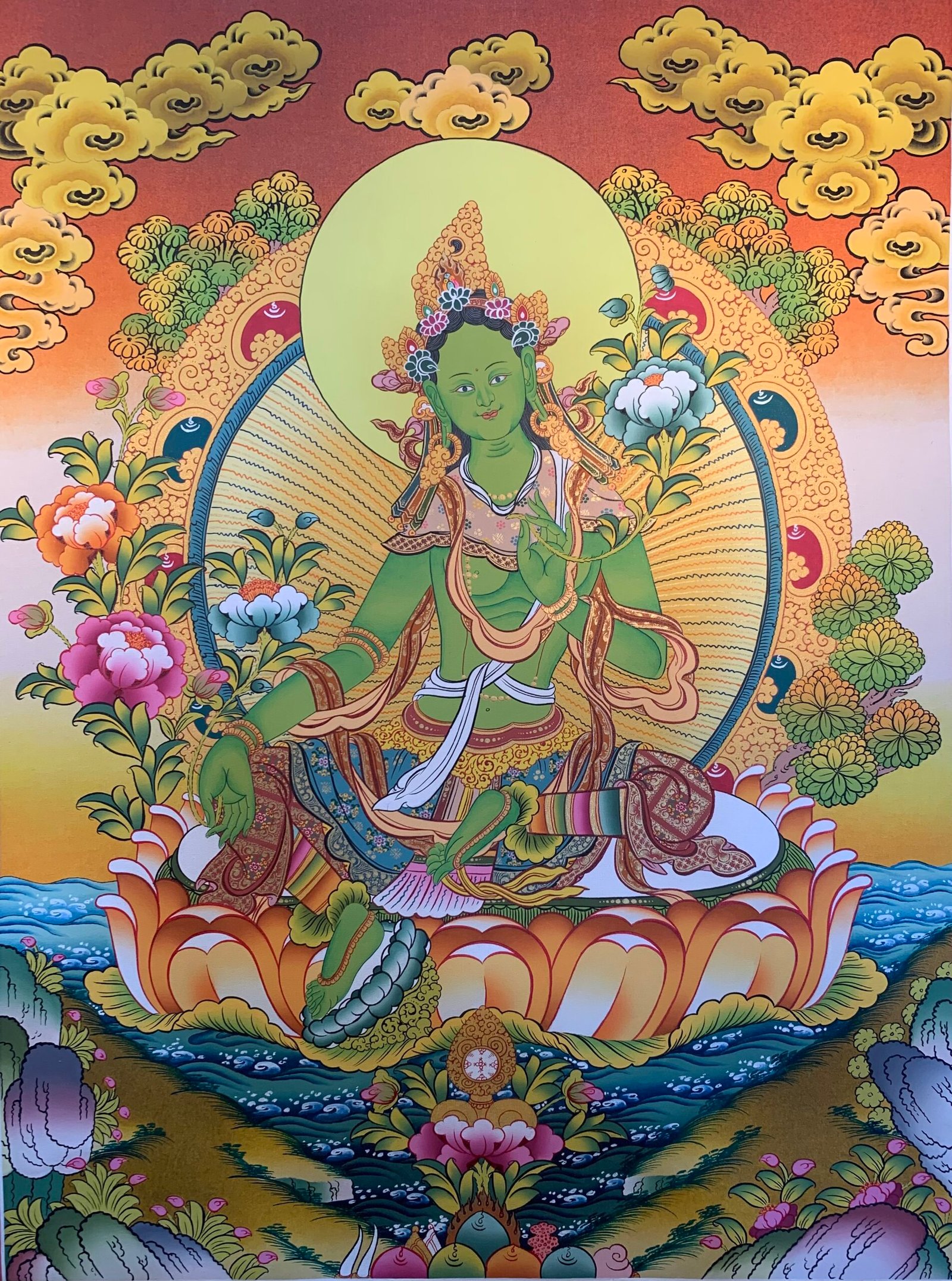1. Green Tara is use as Swift Liberatior:
The Swift Liberator as a Tibetan Thangka Green Tara is know as a divine intervention in human affairs of a nurturing Mother Goddess is a recurring feature in cultures both inside and outside the buddhist tradition. Tara is the principal female manifestation of enlightenment in the buddhist tradition.
2. Green Tara practice can get Enlightenment
According to her legend, many eons ago as the Princess Jnanachandra (Wisdom Moon) she devoted herself to the teachings of Buddha Dundubhisvara (Drum Sound) and made copious offerings to that buddha and his entourage. Eventually, as the result of her untiring practice, she generated the pure, altruistic bodhichitta motivation for the first time and thereby became a glorious•
3. Green Tara knows as Male also?

bodhisattva. At that time some monks, recognizing her great potential, urged the princess to pray for a transformation that would allow her to complete her spiritual training as a male. But she rejected this advice, saying,
Here there is no man, there is no woman,
No self, no person, and no consciousness.
Labeling ”male” or ”female” has no essence,
But deceives the evil-minded world.3
Green Tara, Still, knowing how rare advanced female practitioners were, she made the following adamantine vow: ”Until samsara is empty, I shall work for the benefit of sentient beings in a woman’s body.” From that time onwards the princess dedicated herself to winning full and complete enlightenment. By mastering extremely profound states of meditative absorption she developed great skills in liberating others and hence her name was changed to Tara, the Savioress. From her spiritual master she received the prophecy, ”As long as you manifest the unsurpassed enlightenment, you will be known only
by the name of Goddess Tara .”
is seated upon a lotus arising from
just as Tara is said to have arisen from the compassionate tears of Avalokiteshvara. Her right hand is in the boon-granting mudra indicating her ability to provide beings with whatever they desire. Her left hand at her heart is in the mudra of hestowing refuge: her thumb and ring finger are pressed together to symbolize the united practice of method and wisdom, and the three remaining fingers are raised to symbolize the Three Jewels of Refuge-Buddha, Dharma and Sangha.
In each hand she holds the stem of a blue utpala flower and the three blossoms of each indicate that Tara, the embodiment of enlightened activity, is the mother of the buddhas of the past, present and future. Tara is dressed in the silken robes of royalty. She wears rainbow-colored stockings, a white half-blouse and various jeweled ornaments. The tiara fastened in her black hair is adorned with jewels, the central one a red ruby symbolic of Amitabha, her spiritual father and the head of her buddha family.

She is seated in a distinctive posture, her left leg withdrawn to symbolize her renunciation of worldly passion and her right leg extended to show that she is always ready to arise and come to the aid of those who need her help. With a warm, compassionate gaze she looks down upon each sentient being as a mother regards her only child.
Her emerald-green color-related to the wind element and hence to movement-signifies that Tara is the active principle of compassion, capable of bringing to fruition all activities, mundane or supramundane, that bring benefit to others. As the embodiment of the purity of the wind element, the medium without which the buddhas would be unable to perform their virtuous deeds, Tara assumes her role as the consort of Amoghasiddha, the buddha of all-accomplishing wisdom.
Thangka Painting made in Boudha, Kathmandu, Nepal
21 Green Tara Thangka Painting is Handcrafted by master local artists in Kathmandu Valley, Nepal.

21 Green Tara Thangka Painting sizse
Size Full canvas measures approximately 66*50 centimeters. Inside painted area measures about 60*45 centimeters.

